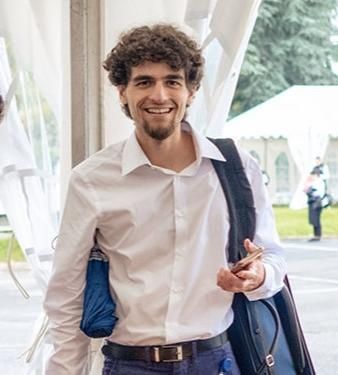Enhanced AI-Driven Automatic Dip Picking in Horizontal Wells through Deep Learning, Clustering and Interpolation, in Real Time
OR
About the Course
SPWLA members, view the course for free!
Abstract
Borehole images in horizontal wells are challenging for dip picking. We observe mainly lengthy parallel and ovoid bedding dip traces called ‘’bull eyes,’’ as the well may be subparallel to the bedding. This deviates considerably from the classic model of dip picking, which extracts only sinusoids. So far, the delineation of non-sinusoidal bedding features has relied on a manual process that entails delineating multiple segments to define these features. Each segment has its dip value, and interpreters have traditionally relied on the average dip to estimate the true bed dip, which may not provide the most accurate results.
In this paper, we present a method that enables the precise automatic extraction of segments from non-sinusoidal features using an artificial intelligence (AI) model and propose an automated grouping mechanism for the segments. Such a solution is applicable in real-time scenarios—which implies working with partial data until the drill’s final beat—facilitating geosteering guidance.
Our solution is an automated workflow that detects and picks non-sinusoidal bedding dip traces in real time in horizontal wells’ borehole images and computes the corresponding orientation of the structure. The workflow starts with borehole images and the associated segments provided by the “auto dip-picking” algorithm. A convolutional neural network detects bedding features and categorizes them as sinusoidal or non-sinusoidal bedding features. Subsequently, segments are regrouped within each bedding feature, creating comprehensive data sets for each feature. For sinusoidal bedding features, full ones are preserved, while fragmented ones in multiple segments undergo an advanced clustering mechanism based on orientation and derivate.
Meanwhile, parallel and “bull eyes” structures undergo a transformative process; a recursive approach connects segments within the same layer. Then, we compute each layer’s global orientation. The procedure ensures adaptability in real time. With the arrival of each new frame, we evaluate if the last detected structure extends into it. If so, a swift recomputation ensues, allowing our solution to provide results whose accuracy is improved dynamically with each new frame.
Our study yielded significant outcomes in automatically detecting non-sinusoidal bedding features and computing associated dips from borehole images in horizontal wells. The integration of our advanced workflow reduced manual intervention. Previously taking 1 hour per kilometer of well to pick non-sinusoidal features manually, our solution combined with an auto dip-picking algorithm achieves the same task in a mere 12 minutes per kilometer. In addition, this workflow is versatile, catering not only to horizontal wells but also to vertical ones.
We provide a solution capable of handling non-sinusoidal bedding and sinusoidal bedding features simultaneously with just one click. By embracing automation, we also eliminate subjective interpretations, ensuring a standardized and efficient analysis process.
This workflow has immediate implications for the oil and gas industry, as no other automated dip-picking solution exists on any platform for non-sinusoidal bedding features and promising efficiency gains and cost effectiveness.
Your Instructor

Alexandre Perrier is a geologist and Interpretation Development Engineer at the SRPC Engineering center based in Clamart, France. He holds a Master’s degree in Geosciences and a Master’s degree in Reservoir Modeling and Simulation. Currently, he is focused on the development of innovative answer products and digital solutions for both Oil & Gas and new energy field applications. Additionally, he is an expert in the interpretation of borehole electrical images.
Course Curriculum
New section
Available in
days
days
after you enroll
